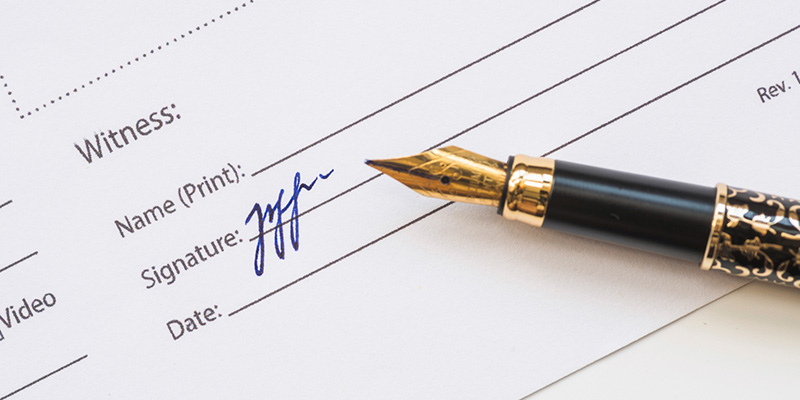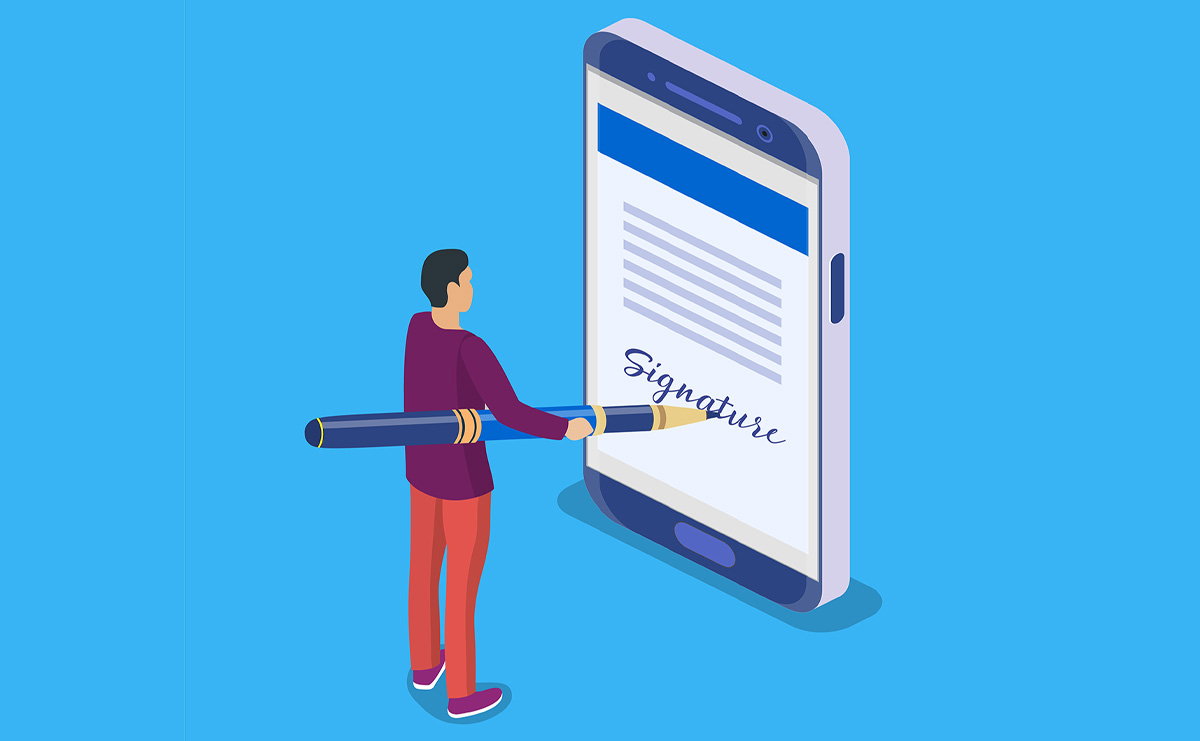Contents
Wet Signature vs. Electronic Signature: Key Differences and When to Use Each
In today’s digital world, businesses and legal professionals often face decisions about whether to use wet signatures or electronic signatures (e-signatures) in their workflows. Both play a vital role in validating documents, ensuring legality, and providing security. In a digital-first world, comparing a wet signature vs. electronic signature can help organizations streamline processes without compromising security. Legal departments frequently debate the use of a wet signature vs digital signature, especially for documents requiring high authentication and security levels. This article will explore what differentiates these two types of signatures, their legal implications, advantages, limitations, and when each is most appropriately used.
What is a Wet Signature?
A wet signature is the physical act of signing a document by hand, usually with a pen. This traditional method is often considered the most authentic form of consent, approval, or verification due to its longstanding use in business, legal, and governmental contexts. Wet signatures are broadly recognized for their legitimacy, especially in legal settings where a tangible mark is evidence of intent and agreement. In scenarios where authenticity or a personal touch is paramount, a wet signature is often preferred over digital alternatives.
Characteristics of Wet Signatures
Wet signatures have several defining characteristics that make them unique:
- Physical Presence: They require the signer to be physically present with the document, adding a layer of security and authenticity.
- Personalized Mark: Each wet signature is unique to the individual, often reflecting slight variations in handwriting, which can help verify authenticity.
- Tangibility: Wet signatures exist on a physical medium (usually paper), which allows them to be handled, stored, and reproduced as physical evidence.
- Legal Recognition: Wet signatures are widely accepted in legal systems and are often required in contracts, agreements, and official documents where traditional proof of intent is mandated.
- Durability: When signed with pen on quality paper, wet signatures are durable over time and have withstanding physical wear, unlike electronic signatures, which rely on digital storage.
- Verification Potential: Experts can analyze Wet signatures for authenticity through forensic techniques, which is valuable in legal disputes involving fraud or forgery.
- Accessibility: Since no unique technology is needed, wet signatures are universally accessible and suitable for those with limited technology access.
- Historical reliability: This form of signature is widely recognized by courts and legal institutions globally due to its historical use and acceptance.
These characteristics make wet signatures a preferred choice in many formal and traditional settings, especially where legal authenticity and longevity are critical.
Advantages of Wet Signatures
Wet signatures offer several advantages, particularly in formal or legally sensitive contexts:
- Enhanced Security and Authenticity: Since a wet signature is created in-person, it often provides more substantial proof of the signer’s identity and intent. The personal nature of handwriting makes forgery harder to accomplish without detection.
- Widespread Legal Acceptance: Wet signatures are legally accepted worldwide and have a long history of validity in courts, making them a reliable choice for binding agreements, contracts, and other legal documents.
- Easy Verification: Forensic experts can examine wet signatures and analyze details like pressure points and ink flow to verify authenticity in dispute cases or suspected forgery.
- Permanent Record: Unlike electronic signatures, which depend on digital platforms, wet signatures on physical documents offer a stable, lasting record that can be stored without technological upkeep.
- Universal Accessibility: Wet signatures require no specialized technology and are accessible to anyone, regardless of digital literacy, making them ideal for individuals without access to electronic devices.
- Personal Connection: Wet signatures can create a sense of personal engagement and commitment, especially in transactions or agreements where in-person interaction is valued.
- No Reliance on Technology: Wet signatures eliminate concerns related to technological failures, digital security breaches, or compatibility issues that may arise with electronic signatures.
These advantages make wet signatures especially useful in legal, financial, and governmental transactions where authenticity, durability, and universal acceptance are paramount.

Limitations of Wet Signatures
Wet signatures, while traditional and widely accepted, do have several limitations:
- Time-Consuming Process: Wet signatures require physical presence or mailing of documents, which can delay processes, especially when signers are in different locations.
- Limited Remote Accessibility: For remote agreements, parties may need to print, sign, scan, and return documents, making it cumbersome compared to digital methods.
- Storage and Retrieval Challenges: Physical documents require secure storage space and can be hard to retrieve, particularly in large organizations with extensive records.
- Vulnerability to Loss or Damage: Wet-signed documents are susceptible to physical wear, tear, fire, water damage, and other risks that could compromise their integrity over time.
- Higher Cost of Handling: In high-volume settings, printing, mailing, and physically storing wet-signed documents can add up.
- Environmental Impact: The need for physical paper and ink increases environmental impact, particularly in organizations that process large volumes of signed documents.
- Limited Security in Some Cases: While wet signatures are difficult to forge, they can still be vulnerable to tampering or forgery if not securely handled, especially when transferred through mail or third parties.
- Not Always Trackable: Unlike digital signatures, which often have timestamps and IP tracking, wet signatures lack a digital trail that could confirm the signing time and location.
Despite their benefits in specific legal or formal contexts, these limitations have led many industries to adopt electronic signatures for convenience, security, and efficiency, especially in remote or high-volume scenarios.
What is an Electronic Signature?
Electronic signatures (e-signatures) refer to any digital indication of consent or agreement, commonly through typing a name, inserting a digital signature, or using signature software. Modern businesses increasingly rely on e-signatures for speed, convenience, and enhanced security features.
Characteristics of Electronic Signatures
Electronic signatures come with unique characteristics that make them both versatile and secure for signing documents digitally. When considering an electronic signature vs physical signature, it is important to understand the legal acceptability and security level each method provides. Here are the main features:
Legality and Enforceability
E-signatures are legally recognized in many jurisdictions, including the U.S. under the E-SIGN Act and in the EU under eIDAS, providing a foundation for their enforceability. Similar to handwritten signatures, electronic signatures signify a party’s intent to agree to or acknowledge the contents of a document.
Authentication and Identity Verification
E-signatures often use multi-factor authentication (MFA), biometric data (e.g., fingerprint recognition), and unique passwords to confirm the signer’s identity. Many e-signature tools generate an audit trail, documenting the signature process from beginning to end, showing details like the time, date, IP address, and even the device used.
Integrity and Security
E-signatures are secured through encryption, ensuring the document remains unaltered after signing. Once signed, any changes to the document are detectable, helping prevent fraud and ensuring the document’s authenticity.
Types and Flexibility
E-signatures come in varying levels, from simple (a click or type name) to advanced and qualified types, including certifications and identity checks for enhanced security and legal recognition. These signatures can be implemented as typed names, scanned handwritten signatures, digital certificates, or biometric signatures, allowing flexibility to suit different contexts while ensuring secure, legally compliant transactions.
Compatibility and Accessibility
E-signature software is designed to work seamlessly across various platforms, including computers, tablets, and mobile devices, enabling users to access and sign documents from virtually anywhere. Additionally, many e-signature tools integrate with CRM, document management platforms, and cloud storage, streamlining workflows and improving document tracking for a more efficient and organized signing process.
Efficiency and Cost Savings
By replacing physical signatures, e-signatures eliminate the need for printing, shipping, and storing paper documents. They allow faster document completion and approval processes, cutting down on delays caused by physical logistics.
Compliance with Industry Standards
E-signature providers often comply with global standards (e.g., ISO 27001, SOC 2) to meet regulatory requirements for secure and confidential data handling. For sectors like finance and healthcare, certain e-signature tools provide compliance with specific laws, such as HIPAA, in the U.S. for patient confidentiality.
Advantages of Electronic Signatures
Choosing between an electronic signature vs physical signature often depends on the document type and the preferred convenience of the parties involved. Electronic signatures offer several advantages that make them increasingly popular across industries as follows:
Increased Efficiency and Speed
E-signatures accelerate document processing by allowing documents to be signed from anywhere, reducing turnaround times compared to traditional methods. Digital platforms enable instant delivery and confirmation of signed documents, eliminating delays from mailing or faxing and supporting faster project completion.
Cost Savings
E-signatures help reduce paper and printing costs by eliminating the need for printing, mailing, and physical storage of documents, resulting in significant savings on operational expenses. Automated document workflows also reduce the administrative burden of tracking and managing paper documents, saving on labor costs and enhancing overall efficiency.
Enhanced Security and Fraud Prevention
Advanced e-signature solutions enhance security by offering robust authentication methods, such as multi-factor authentication and biometric verification, to ensure the signer’s identity. Many e-signature platforms use document encryption and tamper-evident seals, immediately detecting any unauthorized alterations and safeguarding document integrity.
Improved Compliance and Legal Validity
E-signatures hold legal recognition in many jurisdictions, such as the U.S. under the E-SIGN Act and the EU through eIDAS, granting them the same enforceability as traditional handwritten signatures. Moreover, e-signature platforms frequently adhere to industry standards, like ISO and SOC 2, and specific regulations, such as HIPAA, ensuring the secure and compliant handling of sensitive information.
Enhanced Customer and Employee Experience
E-signatures offer significant convenience by allowing customers and employees to sign documents from any device, enhancing accessibility and ease of use. This digital approach also promotes a positive brand perception, as companies adopting e-signatures demonstrate a commitment to modern, eco-friendly practices, which can boost satisfaction among clients and employees alike.
Environmental Benefits
E-signatures contribute to sustainability by reducing paper use, which helps lessen deforestation and minimizes a business’s environmental footprint. By eliminating the need for document transportation through mailing or courier services, e-signatures lower carbon emissions, supporting a company’s broader environmental and sustainability goals.
Enhanced Document Management and Workflow Integration
E-signature solutions simplify document management by providing real-time tracking features, enabling users to monitor document status, such as whether it has been viewed or signed. These tools often integrate with document management systems, CRMs, and cloud storage, automating workflows and ensuring that all signed documents are securely stored in one centralized location for easy access and organization.
Scalability for Growing Businesses
E-signature solutions offer flexibility for expanding operations, as they are easily scalable to accommodate increasing transaction volumes. This makes them suitable for businesses of any size and across various industries. With a global reach, e-signatures enable companies to secure agreements with clients and partners worldwide, eliminating the need for physical presence and supporting seamless international operations.
These advantages make electronic signatures a powerful tool for companies seeking to enhance productivity, reduce costs, and maintain secure, compliant operations.
Limitations of Electronic Signatures
While electronic signatures (e-signatures) offer numerous benefits, they also have some limitations and challenges. Here are the main drawbacks to consider:
Legal Validity and Acceptance Issues
While e-signatures are widely accepted, specific countries or jurisdictions have differing regulations, and some documents (e.g., wills and specific real estate transactions) may still require handwritten signatures for full enforceability. Certain documents might require higher-level e-signatures (e.g., qualified e-signatures), which involve stringent verification processes that can be more cumbersome than simple e-signatures.
Authentication and Security Challenges
Although e-signatures offer secure options, simple e-signature methods (e.g., typed names or clicks) can be more vulnerable to misuse if the signer’s identity is not robustly verified. E-signature platforms range in security; some basic or free options may not provide adequate protection, making choosing a secure, reputable platform for sensitive documents essential.
Technology and Accessibility Barriers
E-signature platforms may not be easily accessible for individuals unfamiliar with technology or lacking access to devices and the internet, limiting usability for some populations. While most e-signature platforms aim to be compatible with all devices, technical glitches or platform restrictions can arise, especially with older devices or software versions.
Data Privacy and Compliance Concerns
E-signature platforms store sensitive personal information, making them potential targets for cyberattacks. Businesses risk regulatory penalties and privacy breaches if data is not managed according to legal standards (e.g., PIPEDA, GDPR, HIPAA). Trusting a third-party e-signature provider requires assurance that the provider adheres to strict data security practices; vendor instability could jeopardize document access.
Integration and Compatibility Limitations
Not all e-signature tools integrate seamlessly with every document management or CRM platform, which can complicate workflow and necessitate extra steps or software customization. Advanced e-signature integrations with customized workflows may require substantial IT resources and time investment, which can be prohibitive for smaller organizations.
Perceived Lack of Authenticity
For some, the absence of a physical signature can feel less personal or “official,” particularly in contexts where physical signing has a strong cultural or business significance. Some clients or partners may still be skeptical about e-signatures, especially those unfamiliar with their legal standing or secure functionality, which can delay transactions.
Long-Term Document Integrity and Storage
As technology advances, specific digital formats may become outdated, making it challenging to access or verify old e-signature records years down the line. Ensuring the long-term authenticity and integrity of e-signed documents requires careful planning to prevent unauthorized alterations over time, which can be complex and costly.
Complex Processes for High-Security Requirements
Some documents require advanced or qualified e-signatures, which can involve additional processes, identity verification, or third-party certifications that may hinder the convenience usually associated with e-signatures.
Dependence on Vendor Platforms
Organizations become dependent on e-signature vendors for platform stability, data security, and compliance, which introduces risks if the provider faces service outages, data breaches, or business interruptions.
When legal, cultural, or technological barriers are present, e-signatures may need to be supplemented with traditional signatures or additional verification steps to ensure legal enforceability and trust.
Key Differences Between Wet and Electronic Signatures
Understanding the differences between a wet signature vs electronic signature is crucial, as each has unique legal implications and applications in modern business transactions.
|
Aspect |
Wet Signature |
Electronic Signature |
|
Form |
Physical signature on a paper document |
Digital representation on an electronic document |
|
Authentication |
Handwriting and ink can sometimes be examined for fraud |
Authentication methods include IP tracking, encryption, and timestamps |
|
Legal Validity |
Universally recognized for most documents |
Recognized for most documents, with exceptions in some cases |
|
Convenience |
Requires physical presence or mailing |
Can be done remotely, allowing for faster transactions |
|
Security |
Vulnerable to physical theft or loss |
High security with tracking, encryption, and audit trails |
|
Environmental Impact |
Paper-based, potentially less sustainable |
Digital, reducing the need for paper and physical storage |
|
Suitability |
Ideal for formal, sensitive documents |
Ideal for frequent, fast-paced transactions |
Legal Validity of Wet and Electronic Signatures
Both wet and electronic signatures are legally valid, but their acceptance varies based on jurisdiction, transaction type, and specific legal requirements. Wet signatures, the traditional ink-on-paper form, are universally accepted and commonly used for contracts, wills, and real estate transactions. They offer a tangible form of consent that can be compared against known signatures for authenticity but require in-person signing, which can be inconvenient for remote transactions. On the other hand, electronic signatures include any electronic mark associated with a document made with intent to sign. E-signatures are widely accepted across the U.S., EU, Canada, and other major jurisdictions, often offering advanced verification measures, like encryption, to secure authenticity. However, certain high-stakes documents may still require a wet signature.
The legal recognition of both types of signatures relies on proving the signer’s intent and compliance with local laws. Wet signatures carry a traditional acceptance, while e-signatures are increasingly preferred for their convenience in digital transactions. Under regulations like the ESIGN Act in the U.S., eIDAS in the EU, and PIPEDA in Canada, electronic signatures are legally binding in most cases. Still, they may require a higher validation level, especially for high-security transactions. With proper compliance, E-signatures offer a reliable and secure way to execute agreements remotely, making them an effective alternative to wet signatures in a digital-first world.
In some cases, only wet signed copies are accepted for record-keeping and verification purposes. Also in some jurisdictions, all documents must be wet signed to meet the legal requirements for authenticity.
When to Use a Wet Signature
Wet signatures are ideal for situations where formality, tradition, or additional security is required. Here are some examples:
Real Estate Transactions
Although laws are evolving, many real estate transactions and deeds still require wet signatures due to their legally binding nature and potential for in-person verification.
Wills and Trusts
Many jurisdictions mandate wet signatures for wills and trust documents to ensure authenticity and reduce the risk of fraud.
Court Filings
Depending on the jurisdiction, court filings may still require physical copies and wet signatures for formal record-keeping.
International Documents
Wet signatures remain necessary when dealing with countries or institutions where e-signatures are not legally recognized.
When to Use an Electronic Signature
Electronic signatures are advantageous when efficiency, accessibility, and speed are priorities. Use e-signatures in situations like:
- Contracts and Agreements: Business contracts, employee agreements, and NDAs can be executed quickly with e-signatures, saving time and resources.
- Sales and Purchase Orders: These transactions often benefit from the speed of e-signatures, particularly when dealing with clients or partners in different locations.
- Client Intake Forms and Consent Forms: E-signatures simplify the client intake process, allowing clients to submit information quickly from their devices.
- Internal Approvals: E-signatures streamline the workflow for approvals on financial documents, policy agreements, and operational decisions.
Combining Wet and Electronic Signatures in a Hybrid Approach
Deciding between a wet signature vs electronic signature often depends on the nature of the agreement, regulatory requirements, and the parties involved. A hybrid approach may involve wet and electronic signatures depending on the document’s requirements and the involved parties’ preferences. For instance:
- Contracts: When discussing contract validity, it is important to consider the advantages of a wet signature vs digital signature, as some legal documents may still require a traditional ink-based signature. Electronic signatures can be used for preliminary agreements, with wet signatures for final contracts.
- Legal Cases: In cases requiring extensive documentation, e-signatures can expedite initial filings, while wet signatures may finalize critical documents.
- Global Transactions: If dealing with international counterparts, a combination of e-signatures for initial agreements and wet signatures for legally binding documents might be necessary to meet varying jurisdictional requirements.
Streamlining Legal Processes with Electronic Signatures in RunSensible
RunSensible’s electronic signature feature simplifies document management by allowing law firms to collect legally binding signatures digitally, making it especially useful for remote client interactions. This feature reduces the time and effort needed to finalize agreements by removing the need for physical meetings or mailing documents, creating a faster, more convenient experience.
With built-in security, RunSensible’s e-signatures use encryption and authentication protocols, ensuring documents remain secure and compliant. Each signature also includes an audit trail that logs essential details, providing legal evidence for transparency and compliance.
Accessible on any device, the e-signature tool allows clients to sign from desktops, tablets, or phones, enhancing flexibility and reducing delays. It integrates seamlessly with RunSensible’s workflows, automating the process and keeping teams updated on pending or completed signatures, ensuring a streamlined signing experience.
Final Thoughts
Choosing between wet and electronic signatures depends on factors like legal requirements, context, and priorities like convenience, security, and authenticity. Wet signatures carry the weight of traditional validation, offering a tangible sense of legitimacy, which makes them ideal for documents that benefit from a physical, enduring presence. On the other hand, electronic signatures are on the rise, thanks to their efficiency, security, and eco-friendly benefits—especially in remote or high-volume situations.
In today’s digital world, e-signatures are game-changers, streamlining workflows, cutting down turnaround times, and making secure remote transactions possible. For law firms and businesses, electronic signatures improve productivity and client experience, especially when platforms like RunSensible integrate them directly into legal workflows, ensuring compliance and security along with convenience.
In the end, both signature types have their place in modern document management. A blended approach—using wet signatures for formal, high-stakes documents and e-signatures for routine agreements—offers the best of both worlds, meeting both legal and practical needs. As the digital landscape evolves, e-signatures continue to stand out as essential for legal professionals and businesses focused on agility, security, and efficiency.
Disclaimer: The content provided on this blog is for informational purposes only and does not constitute legal, financial, or professional advice.







